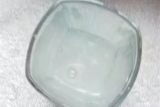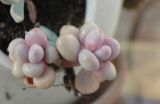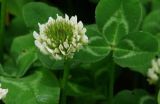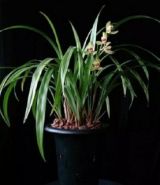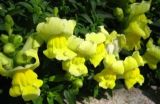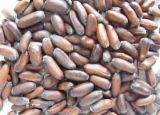英语名词的单复数变化规则,英语中的名词复数变化规则是什么?

1、英语名词的单复数变化规则
一、可数名词都有单数和复数之分。
A: 规则的可数名词的复数变化规则:
1、一般情况加 s : book-- books mouth---mouths house---houses girl---girls
2、以 s 、 sh 、 ch 、 x结尾的加 es : class--- classes box----boxes match----matches
3、辅音字母 + y结尾的变 y为 i加es: city---cities country----countries party----parties factory----factories
4、以 o 结尾的词 +es的只有以下词 :heroes Negroes tomatoes potatoes zeroes/zeros
以 o 结尾并且词尾有两个元音字母 +s radios, zoos, bamboos ,(pianos ,kilos photos)
5、以f, fe 结尾的 变f或fe为v +es :
thief wife life knife wolf half leaf shelf
The thief’s wife killed three wolves with some leaves and knives in half of her life.
B: 名词词尾的读音规则:
A. 在[ p] [t] [k] [f]等清辅音后读[s] cups, hats, cakes, roofs
B. 在[s] [z] [∫] [t∫]等音后读[iz] glasses, faces, roses.
C.在其他情况下读作[z] beds days cities knives.
D.以th结尾的词原来读[ ] 加词尾后多数读[ ]
如: mouth—mouths path—paths ;
但是也有不变化的,如: month—months, ninth—ninths, youth—youths.
C: 不规则的可数名词的变化规则:
小老鼠爬灯台,偷油吃下不来。
男人当警察,保护妇女跟儿童;
英国人的牙咬了法国人的脚;
养了一头日本羊,送给了中国人;
养了一头鹿跟鹅,卖给了瑞士人。
1、man—men, woman—women, tooth—teeth, foot—feet, goose—geese child—children, mouse—mice,
2、单复数相同: sheep, deer, Chinese, Japanese Swiss.
3、以man, woman 修饰名词构成合成词时,两个词都变化.
man servant—men servants. (boy/girl students
祝你学习进步,更上一层楼!(*^__^*)。
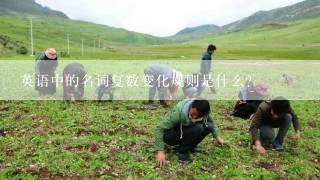
2、英语中的名词复数变化规则是什么?
名词变复数分为:
一. 名词复数的规则变化
1)一般情况 加 -s 清辅音后读/s/ map-maps
浊辅音和元音后读 /z/ bag-bags /car-cars
2) 以s, sh, ch, x等结尾 加 -es 读 /iz/ bus-buses/ watch-watches
3) 以ce, se, ze,等结尾 加 -s 读 /iz/ license-licenses
4) 以辅音字母+y结尾 变y 为i再加es 读 /z/ baby---babies
二. 其它名词复数的规则变化
1) 以y结尾的专有名词,或元音字母+y 结尾的名词变复数时,直接加s变复数。例如:
two Marys the Henrys
monkey---monkeys holiday---holidays
2) 以o 结尾的名词,变复数时:
a. 加s,(一般无生命的或外来词)如: photo---photos piano---pianos
radio---radios zoo---zoos;
b. 加es,(一般是有生命的)如:potato--potatoes tomato--tomatoes
c. 上述a和b两种方法均可,如zero---zeros / zeroes。
3) 以f或fe 结尾的名词变复数时:
a. 加s,如: belief---beliefs roof---roofs
safe---safes gulf---gulfs;
b. 去f,fe 加ves,如:half---halves
knife---knives leaf---leaves wolf---wolves
wife---wives life---lives thief---thieves;
c. 上述a和b两种方法均可,如handkerchief: handkerchiefs / handkerchieves。
三. 名词复数的不规则变化
1) child---children foot---feet tooth---teeth
mouse---mice man---men woman---women
注意:由一个词加 man 或 woman构成的合成词,其复数形式也是 -men 和-women,
如an Englishman,two Englishmen。
但German不是合成词,故复数形式为Germans;Bowman是姓,其复数是the Bowmans。
2) 单复同形,如deer,sheep,fish,Chinese,Japanese ,li,jin,yuan,two li,three mu,four jin等。但除人民币的元、角、分外,美元、英镑、法郎等都有复数形式。
如:a dollar, two dollars; a meter, two meters。
3)集体名词,以单数形式出现,但实为复数。例如:
people police cattle 等本身就是复数,
不能说 a people,a police,a cattle,但可以说a person,a policeman,a head of cattle, the English,the British,the French,the Chinese,the Japanese,the Swiss 等名词,表示国民总称时,作复数用,
如The Chinese are industries and brave. 中国人民是勤劳勇敢的。
4) 以s结尾,仍为单数的名词,如:
a. maths,politics,physics等学科名词,一般是不可数名词,为单数。
b. news 为不可数名词。
c. the United States,the United Nations 应视为单数。
The United Nations was organized in 194
5、 联合国是1945年组建起来的。
d. 以复数形式出现的书名,剧名,报纸,杂志名,也可视为单数。
例如:
"The Arabian Nights" is a very interesting story-book.
《一千零一夜》是一本非常有趣的故事书。
5) 表示由两部分构成的东西,如:glasses (眼镜) trousers, clothes等,若表达具体数目,要借助数量词 pair(对,双); suit(套); a pair of glasses; two pairs of trousers等。
6) 另外还有一些名词,其复数形式有时可表示特别意思,如:goods货物,waters水域,fishes(各种)鱼。
四. 不同国籍人的单复数
国籍 总称(谓语用复数) 单数 复数
中国人 the Chinese a Chinese two Chinese
瑞士人 the Swiss a Swiss two Swiss
澳大利亚人the Australians an Australian two Australians
俄国人 the Russians a Russian two Russians
意大利人 the Italians an Italian two Italians
希腊人 the Greek a Greek two Greeks
法国人 the French a Frenchman two Frenchmen
日本人 the Japanese a Japanese two Japanese
美国人 the Americans an American two Americans
印度人 the Indians an Indian two Indians
加拿大人 the Canadians a Canadian two Canadians
德国人 the Germans a Germans two Germans
英国人 the English an Englishman two Englishmen
瑞典人 the Swedish a Swede two Swedes
希望帮到你。





























































